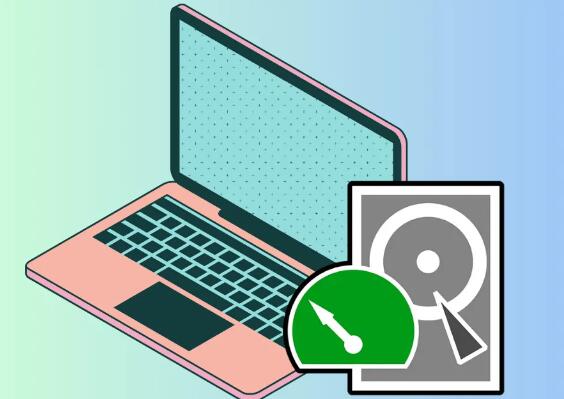Data loss can be a harrowing experience, whether it’s due to accidental deletion, corruption, or hardware failure. Fortunately, there are tools available to help recover lost data. TestDisk is a powerful, open-source data recovery software that can recover lost partitions and make non-booting disks bootable again.
Of course, you can also choose our Panda Assistant to recover data. The price is more favorable, the operation is simple, and the functions are complete.
1. TestDisk
1.1 What is TestDisk?
TestDisk is a free and open-source software designed for data recovery. It is primarily used to recover lost partitions and fix boot issues but can also recover deleted files from various file systems, including FAT32. NTFS, ext2. ext3. ext4. and HFS+.

1.2 Why Use TestDisk?
Open Source: Being free and open-source, it is accessible to anyone.
Cross-Platform: Available for Windows, macOS, and Linux.
Powerful Features: Can recover partitions, repair boot sectors, and recover deleted files effectively.
1.3 System Requirements
TestDisk runs on various operating systems. Ensure your system meets the following requirements:
OS: Windows (XP and later), macOS, Linux.
Disk Space: Sufficient space on the recovery destination (not the drive being recovered).
File Systems Supported: FAT32. NTFS, ext2/ext3/ext4. HFS+, and more.
2. Installation of TestDisk
2.1 Downloading TestDisk
Go to the official TestDisk website: cgsecurity.org.
Select the appropriate version for your operating system.
Download the ZIP file and extract its contents to a preferred location on your computer.
2.2 Running TestDisk
Windows: Open the extracted folder and run testdisk_win.exe as an administrator.
macOS: Open the Terminal, navigate to the extracted folder, and run sudo ./testdisk.
Linux: Open the Terminal and run sudo testdisk.
3. Using TestDisk for File Recovery
3.1 Initial Setup
Upon launching TestDisk, follow these steps:
Select “Create”: This option creates a new log file to track the recovery process.
Choose the Disk: Select the disk from which you want to recover files. Use the arrow keys to navigate and press Enter to confirm your selection.
3.2 Selecting Partition Table Type
TestDisk automatically detects the partition table type. However, if you know the type (e.g., Intel/PC, EFI/GPT, etc.), select it.
3.3 Analyzing the Disk
Choose “Analyse” to begin scanning for lost partitions.
TestDisk will display the current partitions. Use “Quick Search” to look for lost partitions.
3.4 Deeper Search (if needed)
If the quick search does not find the deleted files, select “Deeper Search”. This process may take longer but can locate more files.
3.5 Navigating Through Partitions
Once the scan is complete, navigate through the partitions using the arrow keys.
TestDisk will show you the files and folders within each partition.
4. Recovering Deleted Files
4.1 Locating Deleted Files
Navigate to the directory where you expect to find the deleted files.
Deleted files will be indicated with a different color (typically red).
4.2 Selecting Files for Recovery
Use the arrow keys to highlight the files you want to recover.
Press “C” to copy the selected files.
4.3 Choosing Recovery Destination
TestDisk will prompt you to choose a recovery destination.
Important: Never save recovered files back to the original drive to avoid overwriting data. Choose a different drive or external storage.
4.4 Completing the Recovery
Once you’ve chosen the destination, TestDisk will begin the recovery process.
After recovery, navigate to the destination to confirm that the files are restored successfully.
5. Troubleshooting Common Issues
5.1 No Files Found
If TestDisk does not find any files, ensure you are scanning the correct partition.
You may need to perform a deeper search or check if the partition is intact.
5.2 TestDisk Crashes or Freezes
Ensure that your version of TestDisk is up to date.
Try running it with administrative privileges.
Check for hardware issues with the drive.
6. Best Practices for Data Recovery
6.1 Regular Backups
Prevent data loss by regularly backing up your important files to external drives or cloud storage.
6.2 Safely Eject Drives
Always safely eject external drives to avoid corruption.
6.3 Use Read-Only Mode
When using data recovery software, ensure that the disk is set to read-only mode if possible to prevent further data loss.
About us and this blog
Panda Assistant is built on the latest data recovery algorithms, ensuring that no file is too damaged, too lost, or too corrupted to be recovered.
Request a free quote
We believe that data recovery shouldn’t be a daunting task. That’s why we’ve designed Panda Assistant to be as easy to use as it is powerful. With a few clicks, you can initiate a scan, preview recoverable files, and restore your data all within a matter of minutes.
Subscribe to our newsletter!
More from our blog
See all postsRecent Posts
- How to recover a deleted slide in powerpoint? 2025-02-27
- How to recover deleted capcut videos? 2025-02-27
- How to recover a file deleted from a shared drive? 2025-02-27










